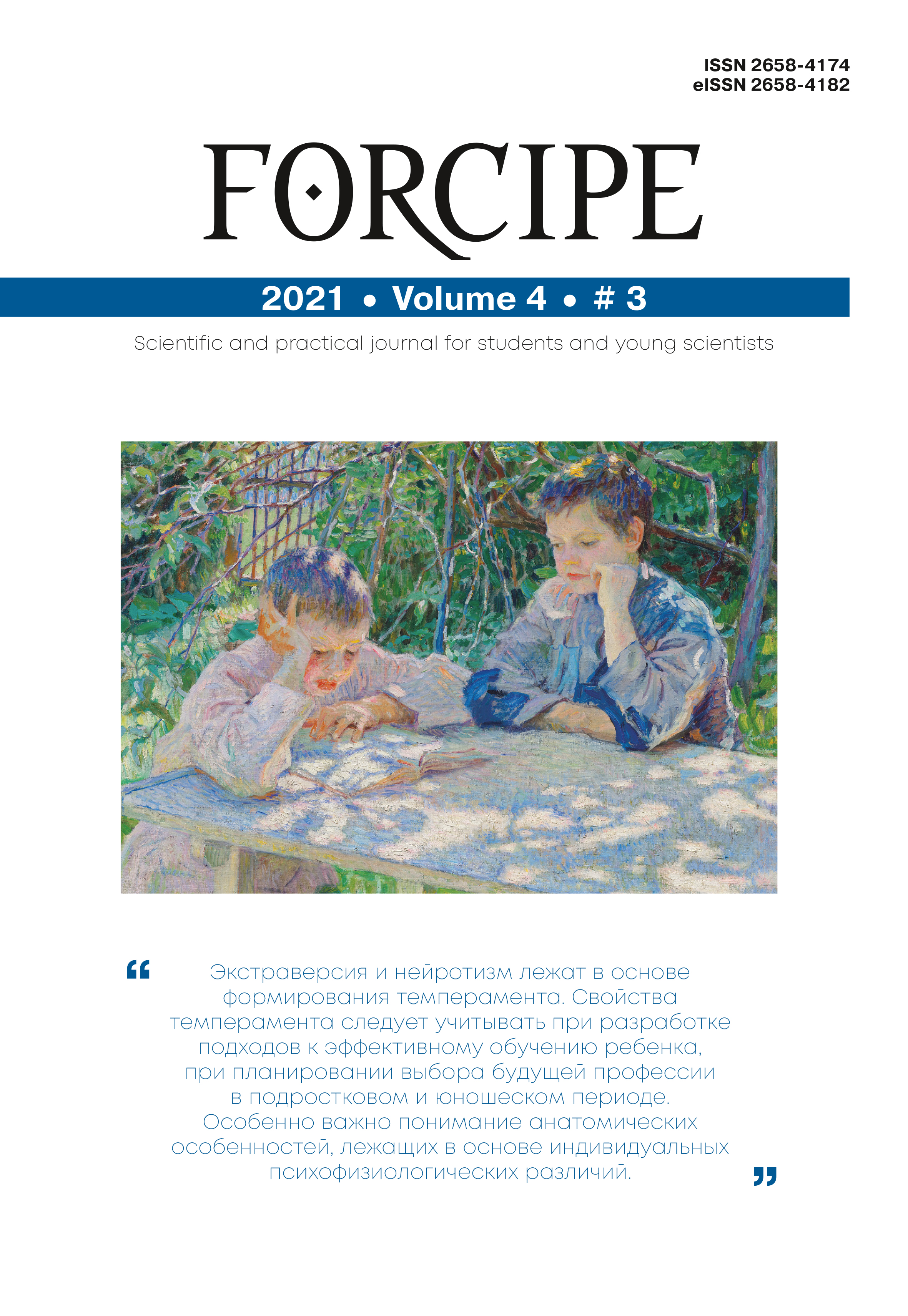RELATIONSHIP OF PERSONAL FEATURES OF STUDENTS WITH THE CHARACTER OF BIOELECTRIC ACTIVITY OF THE FRONTAL BRAIN CORTEX (in memory of Natalia Yu. Smith)
Abstract
The purpose of this investigation was to study the relationship between the indicators of extraversion and neuroticism of the subjects and the parameters of their EEG. Materials and methods. The study involved 34 subjects of both sexes, right handed, with an average age of 19.3 years. To determine the level of extraversion and neuroticism, the standard Eysenck test (option B) was used. While EEG registration, the bipolar derivation method was used; 19 electrodes were exposed in accordance with the international Jasper 10/20 system. EEG was recorded at rest state with eyes closed and during functional tests: eye opening, hyperventilation, photostimulation. According to the indicators of the Eysenck test scale “Extraversion introversion”, the following groups of subjects were distinguished with high, medium and low levels of extraversion and neuroticism. For each group of subjects, the correlation coefficients were calculated between the EEG parameters (index and absolute power) and the results of Eysenck’s test (the level of extraversion and neuroticism). Significant correlation coefficients were found between the level of extraversion/neuroticism and the index/power of delta and theta rhythms as at rest state with eyes closed, as while performing functional tests. Differences in the correlations of the Eysenck test results with EEG parameters were found in groups of subjects with high, medium and low levels of extraversion and neuroticism. The groups of extroverts and introverts differ in the character of the correlations between the theta rhythm index and the level of extraversion when performing the functional test “opening the eyes”. The “High neuroticism” and “Stable” groups differ in the character of the correlations between the power of the theta rhythm with open eyes and the level of neuroticism. For the groups of subjects distinguished by the level of extraversion and neuroticism, differences in the character of correlations between EEG parameters and the results of Eysenck’s test were more often detected while performing functional tests than in a state of complete rest with closed eyes.



